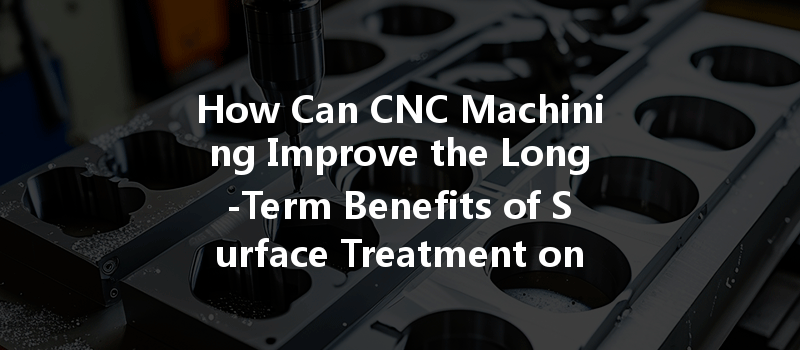:
Did you know that approximately 90% of all industrial products require some form of surface treatment? This statistic highlights the crucial role surface treatment plays in enhancing the durability, functionality, and performance of various components across multiple industries. From automotive to aerospace and beyond, the synergy between CNC (Computer Numerical Control) machining and surface treatment is essential for achieving optimal results. In this blog, we will dive deep into how CNC machining can improve the long-term benefits of surface treatment on parts, focusing on detailed solutions and best practices.
Chapter 1: Understanding the Basics of CNC Machining and Surface Treatment
Before we delve into how CNC machining impacts surface treatment, let’s define the two key concepts:
CNC Machining involves the use of computer-controlled tools to shape and manufacture parts from a range of materials including metals, plastics, and ceramics. This technology allows for precision, repeatability, and versatility in producing complex geometries that are often impossible to achieve with traditional machining methods.
Surface Treatment encompasses processes that alter the surface properties of a material to enhance its performance. This can include treatments such as anodizing, plating, coating, and polishing, aimed at improving wear resistance, corrosion resistance, surface finish, or aesthetic appeal.
Chapter 2: The Importance of Surface Treatment in CNC Machining
Surface treatment is not merely an add-on but an essential step in the machining process. Here’s why:
Chapter 3: How CNC Machining Enhances Surface Treatments
Now that we understand the significance of surface treatments, let’s explore how CNC machining contributes to their efficacy.
3.1 Precision and Consistency
One of the major advantages of CNC machining is its ability to produce parts with high precision and consistency. This precision is critical for surface treatments, as:
3.2 Minimized Surface Defects
Surface defects can lead to failures in treatment applications. CNC machining can minimize these issues in several ways:
3.3 Design Flexibility
The flexibility in designing parts is another benefit of CNC machining that enhances surface treatments:
Chapter 4: Practical Solutions for Optimizing CNC Machining and Surface Treatment Integration
To maximize the long-term benefits of surface treatment through CNC machining, certain strategies can be employed:
4.1 Selecting the Right Surface Treatment for the Application
Carefully selecting a surface treatment based on application requirements fundamentally improves performance. Consider factors such as:

4.2 Focus on Pre-Treatment Processes
Prior to applying any surface treatment, pre-treatment processes are essential:
4.3 Post-Treatment Quality Control
After surface treatment, quality control checks are essential:
Chapter 5: Case Studies: Successful Integration of CNC Machining and Surface Treatments
Case Study 1: Automotive Components
In the automotive industry, CNC machining and surface treatment work hand in hand. For instance, a leading automotive manufacturer integrated anodizing processes on aluminum components machined by CNC methods, leading to:
Case Study 2: Aerospace Applications
Aerospace components require stringent quality standards. Here, CNC machining was utilized to create precision parts that underwent hard anodizing. The result was parts that maintained structural integrity while resisting wear, even in extreme conditions.
Chapter 6: Future Trends in CNC Machining and Surface Treatment Technologies
The landscape of CNC machining and surface treatments is continuously evolving. Let’s explore some noteworthy trends:
6.1 Advanced Materials
The introduction of new materials designed specifically for CNC machining that also allow for advanced surface treatments is on the rise. These innovative materials can significantly enhance part performance and longevity.
6.2 Digital Technology Integration
The integration of IoT (Internet of Things) devices in CNC machines offers robust data collection and real-time monitoring. This technology enables operators to make faster decisions regarding surface treatment applications.
6.3 Sustainable Practices
There’s a growing shift towards eco-friendly surface treatment processes, such as the use of water-based coatings or green chemistry. CNC machining will play a role by ensuring precise application methods to minimize waste.
CNC machining serves as a foundational element that enhances the long-term benefits of surface treatments across multiple industries. By implementing strategies for precision, consistency, and thoughtful selection of treatments, manufacturers can create parts that not only meet but exceed performance standards.
As we have explored in this blog, the integration of CNC machining with effective surface treatments is more than a best practice; it is essential for achieving part longevity and functionality. In a competitive landscape where efficiency and reliability are paramount, understanding these fundamentals is invaluable.
In conclusion, remember that every part you fabricate is an opportunity to enhance not only its physical properties but also to pave the way for sustainable practices that benefit both your manufacturing process and the environment. The marriage of CNC machining and surface treatment is a robust partnership that defines modern manufacturing, making it essential for anyone looking to thrive in today’s competitive market. So, as you consider your next machining project, think critically about how these processes work together to elevate your product from good to exceptional.






